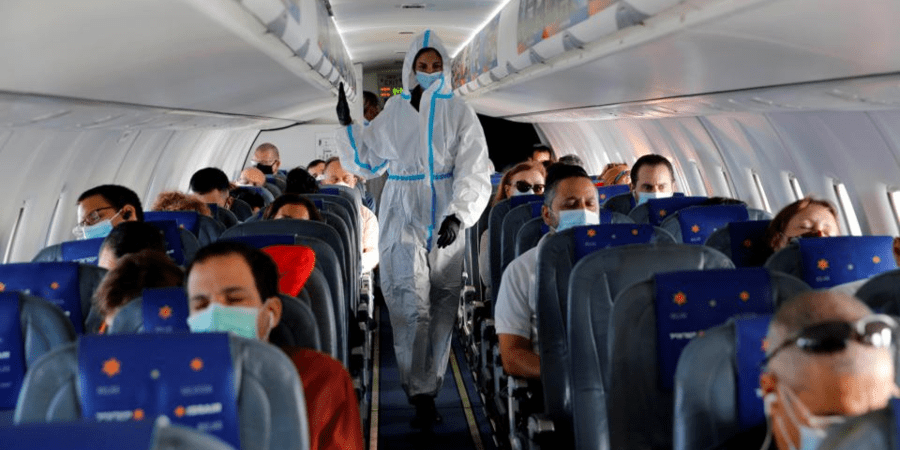Health
Study shows low risk of contracting COVID-19 in flight with masked passengers [Video]

WHAT YOU NEED TO KNOW:
- The risk of getting exposed to the coronavirus while on a 12-hour flight is very flimsy, according to a U.S. Transportation Command-backed study on Thursday.
- Study findings determined that 99.7 percent of virus particles released by an infected passenger with a mask can be threshed out by the aircraft’s filtration system in 6 minutes.
- The Pentagon study conducted over 300 aerosol tests in eight days aboard United Airlines Boeing 777 and 767 aircrafts.
The risk of getting infected with an airborne virus like COVID-19 in a flight is very low, especially when most passengers are wearing masks, reveals a Pentagon study released Thursday.
The U.S. Transportation Command-led study further suggests that roughly 99.99% of the particles emitted into the air by an infected person wearing a mask are sifted out of the aircraft cabin by the filtration systems on the aircraft within a 6-minute timeframe.
So, even if a masked passenger is seated right next to an infected passenger, 99.7 percent of virus particles could be removed within that time frame, which is about 15 times faster than the particles would take to disperse in a home and 5 to 6 times faster than in a regular hospital.
Results thus determined that exposure to an infectious dose of COVID-19 while on a 12-hour flight is “extremely unlikely”.
The Pentagon study, which was deemed the biggest aircraft aerosol experimental validation testing ever, was conducted over eight days of inflight and ground tests aboard United Airlines Boeing 777 and 767 aircrafts.
During the experiments, which involved over 300 aerosol release tests, the Commercial Aircraft Cabin Aerosol Dispersion Test was used to estimate how long the aerosols remained in the air. Mannequins that posed as infected passengers were positioned throughout the plane to simulate where aerosols might be released from breathing or coughing, with or without masks.
Based on samples taken from “high-touch” zones, researchers found that flat surfaces like armrests are more likely to collect virus particles than vertical surfaces like video screens and seat backs.
Among the study participants involved were DARPA and Air Mobility Command, biodefense company Zeteo Tech, research company S3i, as well as the National Strategic Research Institute of the University of Nebraska. Both Boeing and United Airlines served as industry partners.
The study findings could also provide a positive sign for the commercial airline industry, one of the hardest hit during the pandemic, as it tries to bounce back from the coronavirus recession.
Source: The Hill
